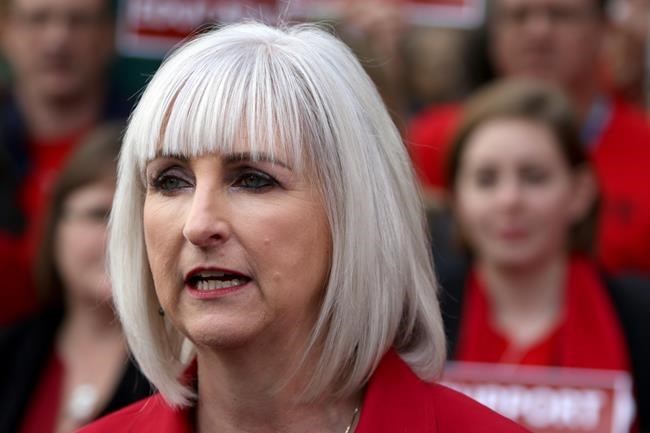VANCOUVER — The British Columbia Teachers' Federation is asking the Labour Relations Board to address its concerns about health and safety measures during the COVID-19 pandemic.
Documents filed with the board say the federation has heard from many of its members about "inconsistent and inadequate" health and safety precautions in schools.
The complaint says the protections don't meet what was promised by the provincial government over the summer for reopening schools amid the pandemic.
The union filed the submission under a section of the labour code that allows the board to make settlement recommendations over disputes while a collective agreement is in force.
It wants the board to act on an expedited basis to resolve concerns that may cause teachers to "refuse to perform unsafe work" or file a "tsunami of grievances" over how school districts have implemented Ministry of Education policies.
Federation president Teri Mooring said her union has worked "hand in hand" with the provincial government for months, but that she has lost faith in its commitment to safety.
"The (federation) would not be taking this step if we didn't feel the government had failed to keep teachers and students safe," she said at a news conference on Friday. "Unfortunately, our concerns have not been taken seriously, they've been diminished and dismissed."
Education Minister Rob Fleming wouldn't comment on the specific submission before the board but said it was important to recognize that this is only the first full week of classes.
British Columbia has also fared better on its return to classes than other provinces, he added.
"We have always anticipated that there would be tweaks and fixes required," he said.
The Education Ministry said in a statement 85 per cent of kindergarten to Grade 12 students have returned to classrooms.
Mooring said the high return is due to the confidence parents have in teachers, adding they are being hampered by the provincial government's unwillingness to invest enough money to ensure proper safety measures are followed.
Part of the issue, she said, is that the government isn't enforcing its own COVID-19 guidelines in schools and leaving it up to individual school districts.
That has led to problems with rules around matters such as student cohorts or learning groups, Mooring said.
The aim is to limit the number of students in a group to reduce their contacts. For elementary and middle-school students, groups are limited to 60 students while secondary school groups are capped at 120 students.
However, Mooring said the cohort model has already broken down.
"You cannot keep a closed group within a larger system. Schools don't work that way, students don't work that way," she said. "It's not an adequate protection."
She also raised concerns about the level of staffing to properly clean schools and the availability of personal protective equipment for teachers.
Mooring said the union avoided filing grievances when the pandemic first broke out in the spirit of working with the government to find a solution.
"This summer, we were really disappointed when time and time again, government was making decisions that were not informed by the steering committee, not informed by what teachers say, and that was really disappointing to us."
Fleming said issues over the circulation of students and cohorts were anticipated and are being managed.
In response to Mooring's claims, Fleming said the concerns aren't as severe as they're being made out to be.
"In the constant communication I have with people who work in the school system ... what you're seeing around the province is an incredible amount of teamwork and the focus is on the huge task that's been accomplished."
The government has supported districts with any inquiries or requests for help and will continue to do so, Fleming said.
The teachers' union said it hopes to be speaking to the Labour Relations Board about its submission next week.
This report by The Canadian Press was first published Sept. 18, 2020.
Nick Wells, The Canadian Press



